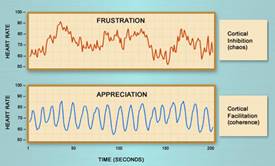Thanksgiving Day in the United States and — did you know? — in Brazil is celebrated on the fourth Thursday of November as a day of gratitude for the nations’ harvests. The holiday dates back nearly four centuries to the pilgrims in America, and just four decades in Brazil, where in 1949 the Brazilian ambassador in Washington D.C., so liked the holiday that he took the idea home, where it was promptly adopted.
Thanksgiving was celebrated in Canada on the second Monday of October this year, as it has been since 1957, to offer thanks at the end of the harvest season. Chung Ch’ui in China and Chuseok in Korea are major three-day national thanksgiving harvest festivals whose date of celebration varies slightly each year during the nations’ harvest seasons. Among other countries that celebrate a national day of thanks are Australia, part of India, Japan, Liberia and Malaysia. Many other nations hold a variety of events to express gratitude for their nations’ harvests.
LEVEL OF COHERENCE
Offering some food for thought this Thanksgiving, the Institute of HeartMath® (IHM), a recognized leader in researching the physiology of emotions, is serving up a belt-buster when it comes to the latest understanding of gratitude. The institute has been studying human emotions for nearly 20 years — among them gratitude and appreciation — emotions that are at the heart of an American holiday whose roots date back to 1621.
According to research at IHM, true feelings of gratitude, appreciation and other positive emotions can synchronize brain and heart rhythms, creating a bodywide shift to a scientifically measurable state called coherence. In this optimal state, the body’s systems function more efficiently, generating a greater balance of emotions and increased mental clarity and brain function.
This method of measuring appreciation is much more precise than attempting to guess by observing how much someone is smiling. Measuring coherence can accurately show heart, brain and nervous-system interactions that are sensitive to changes in emotions.
While an individual — smiling or not — is experiencing coherence, the heart rhythm appears as a smooth wavelike pattern on an HRV graph. Contrast coherence with incoherence, created by negative emotions such as frustration and anger, which can often disrupt the synchronization of the body’s systems and create jagged or chaotic patterns on a graph.
• Increased positivity – Daily gratitude exercises can bring about a greater level of positive feelings, according to researchers from the University of Miami and the University of California, Davis who studied this process in 157 individuals over 13 days.
• Boost to the immune system – The IgA antibody, which serves as the first line of defense against pathogens, increases in the body.
• Emotional “compound interest” – The accumulated effect of sustained appreciation and gratitude is that these feelings, and coherence, are easier to recreate with continued practice. This is because experiencing an emotion reinforces the neural pathways of that particular emotion as it excites the brain, heart and nervous system. The downside is that you also can reinforce negative emotions.
Thankfully, gratitude and appreciation can create their own positive psycho-physiological holiday in your body — without the necessity of a feast.
For some on this holiday, the appreciation equation might be something like gobble + gobble = thank you and naptime. Sincere self-evoked feelings of gratitude and appreciation, however, are the only ingredients needed, as explained by IHM founder Doc Childre and Director of Research Dr. Rollin McCraty in their e-book, The Appreciative Heart: the Psychophysiology of Positive Emotions and Optimal Functioning.
• Instructions: Take a few short appreciation breaks during the day. During each break take one or two minutes to breathe deeply through the area of the heart. While doing so, try to hold a sincere feeling of appreciation in your heart area. This can be appreciation for a family member, friend who helped you with something or even a wonderful vacation, etc.
• Why it works: The exercise of activating a positive feeling like appreciation literally shifts our physiology, helping to balance our heart rhythms and nervous system, and creates more coherence between the heart, brain and rest of the body.
Here in America, where the nation prepares to celebrate its 124th “official” Thanksgiving Day, co-writer of the Nourishing the Heart, Deborah Rozman, and I would like to wish you and your families a happy Thanksgiving — wherever, whenever and however you celebrate your bounty.
"The Appreciative Heart," which can be downloaded by clicking this special link and liking IHM's Facebook fan page, explains how emotions are reflected in heart rhythms, and how creating a change in those rhythms can result in quick and substantial changes in whatever emotional state you may be experiencing. If you are not on Facebook, simply e-mail us at: info@heartmath.org and say “Send me a free copy of The Appreciative Heart.”
By Sara Childre, President and CEO of the non-profit Institute of HeartMath. Since 1991, Sara has helped oversee and develop HeartMath trainings, educational products and scientific programs. She was appointed vice president and CFO of the institute in 1992, then president and CEO in 1998.







No comments:
Post a Comment